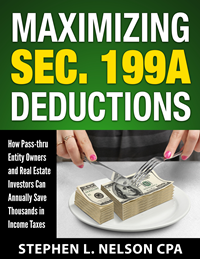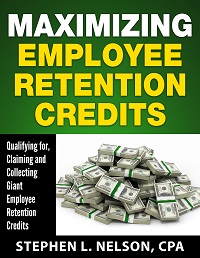What is a Qualified Subchapter S Subsidiary (aka QSUB, aka QSSS)?
A Qualified Subchapter S Subsidiary, also known as a QSUB or QSSS, is simply an S corporation that's owned by another S corporation.
A QSUB is treated as a subsidiary of the parent S corporation. And the really convenient thing is that only the parent S corporation owes a tax return to the federal and state government. (The income and deductions of the "child" S corporation get bundled with the "parent's" income and deductions.)
Making the QSUB or QSSS Election
In order to be treated as a "QSUB" or "QSSS" or whatever you want to call the "child" S corporation, the parent S corporation makes a "qualified subchapter s subsidiary" election using a form 8869 by March 15 of the first year the parent S corporation wants to treat the child S corporation as a QSUB.
Note, too, the QSUB election can also be made sometime in the preceding year.
A Word About Late QSUB Elections
If someone misses the deadline, often (usually?), the QSUB election can be made late as long as you have a good excuse and behaved all along as if you were going to run the child S corporation as a QSUB.
If you are going to make a late QSUB election, you want to locate the current IRS revenue procedure for late elections. (As of late 2017, that means Revenue Procedure 2013-30.)
When to Use a QSUB or QSSS
QSUBs can be useful to know about. If one S corporation acquires another S corporation, for example, you want to explore using the QSUB option for the new subsidiary.
Furthermore, attorneys sometimes like to use QSUBs to move around the assets of a business structured as an S corporation so that no assets drop between the cracks during a sale. (A common technique for selling the assets of an existing S corporation is to sell the S corporation to a new S corporation, make a QSUB election for the "child," convert the QSUB into an LLC, and then sell an interest in the LLC or sell the LLC.)
However, for new startup ventures spawned by a parent S corporation, you would not very often use the QSUB option. You would instead use a single member limited liability company. Here's why: Both a QSUB owned by a parent S corporation and a single member limited liability company owned by a parent S corporation are disregarded and just folded up under the parent for tax accounting purposes.
Tip: You've hopefully poked around this website enough to know what we publish downloadable S corporation kits for all fifty states. What you might not know is that we publish do-it-yourself LLC kits for all fifty states, too. Visit our www.llcsexplained.com web site for additional information.
If You Don't Make a QSUB Election
A quick tangential point: If an S corporation acquires another S corporation and does not make the QSUB election for the new "child," that child becomes a regular C corporation.
The reason why? The "child's" Subchapter S status gets terminated because an S corporation is not a eligible Subchapter S corporation shareholder.
Probably you would not want this outcome. So be careful about not making a QSUB election... and about forgetting to do a QSUB election.
A Few Words About Sec. 338(h)(10) Elections
A final point about Qualified Subchapter S Subsidiaries... if you ever do purchase an S corporation, you want to know about something called a Section 338(h)(10) election.
Section 338(h)(10) elections allow you to setup a parent S corporation, use that parent to buy a "child" S corporation which you treat as a QSUB, and then allow you to treat the purchase of the "child" S corporation's stock as if instead you've directly purchased the assets owned by the "child" S corporation.
Typically a Section 338(h)(10) election doesn't cost the selling S corporation's shareholders any additional tax as compared to just selling the assets of the S corporation. The selling S corporation records gain on the sale of the assets and then passes that gain through to their shareholders using the S corporation tax return and the K-1 forms. This gain should be similar to the gain they would have reported if they had simply sold their stock in the S corporation to the buyer.
But the election allows buyer to maintain the separate legal existence of the child S corporation because legally they've bought the stock of the S corporation... while at the same time depreciating or amortizing the assets the Sec 338(h)(10) election says they've purchased.
If you think you might want to make a Section 338(h)(10) election, be sure to confer with a knowledgeable S corporation tax practitioner. Working with QSUBs and Section 338(h)(10) elections can be a little bit tricky.
Back to list of frequently asked questions
Additional Information You May Find Useful
If you want additional information about how to maximize the tax savings related to running a business or investment venture, you may also be interested in one of our downloadable e-books (see descriptions below). Each book covers a category of tax planning topics that easily save a business owner significant amounts of income or self-employment taxes (potentially thousands of dollars a year) and is instantly downloadable.

Often the best tax saving tool private companies have? The Section 199A deduction which allows them to avoid taxes on the last 20 percent of their income.
Read More
Using an S corporation for your business? To maximize savings, you need to minimize the salary paid to shareholders. But this decision is tricky.
Read More
Nearly secret, the federal government's employee retention credits provide tremendous payroll tax savings for most small businesses... A new book from our firm explains.
Info here